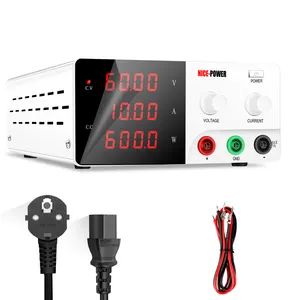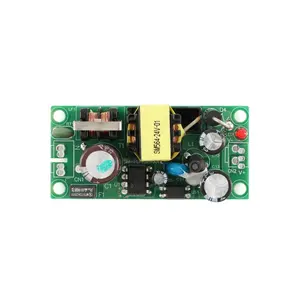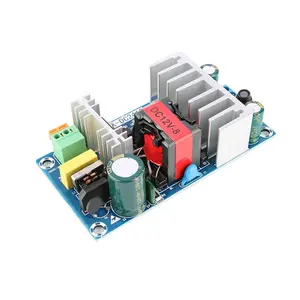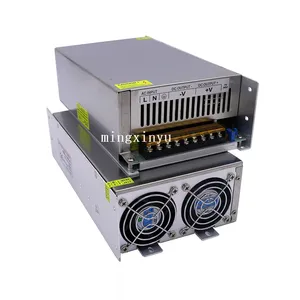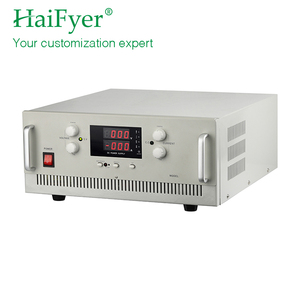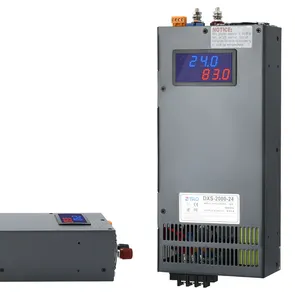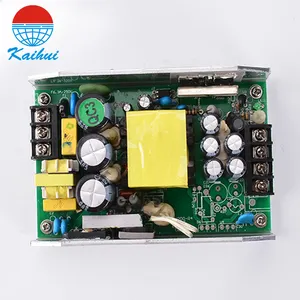Arduino Switching Power Supply






 1/13
1/13











 1/27
1/27






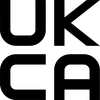




 1/25
1/25






About arduino switching power supply
Where to Find Arduino Switching Power Supply Suppliers?
China remains the central hub for electronics manufacturing, with Shenzhen-based suppliers dominating production of Arduino-compatible switching power supplies. The city's advanced electronics ecosystem enables tight integration between component sourcing, PCB fabrication, and final assembly, supporting rapid prototyping and scalable production. Suppliers in this region specialize in compact, regulated DC power solutions tailored for microcontroller applications, offering models ranging from 5V/1A modules to programmable 30V/10A laboratory-grade units.
These manufacturers benefit from proximity to semiconductor distributors, metal stamping facilities, and logistics networks, reducing material lead times and enabling competitive pricing. Most operate within vertically integrated supply chains, allowing control over critical processes such as transformer winding, SMT assembly, and thermal testing. Buyers can expect standard lead times of 7–15 days for stocked items, with customization options available for voltage regulation, output connectors, and digital display interfaces. Economies of scale in Shenzhen support low minimum order quantities (MOQs), often starting at one piece, while maintaining per-unit costs 20–35% below Western alternatives.
How to Choose Arduino Switching Power Supply Suppliers?
Evaluating suppliers requires a structured assessment across technical, operational, and transactional dimensions:
Technical Compliance
Confirm adherence to international safety and electromagnetic compatibility standards, including CE, RoHS, and FCC declarations where applicable. For industrial or export-bound deployments, verify isolation ratings, ripple/noise specifications, and overload protection mechanisms. Request test reports for line/load regulation and efficiency curves across operating ranges.
Production Capability Verification
Assess infrastructure maturity through key indicators:
- Facility size exceeding 1,000m² with dedicated SMT and aging test lines
- In-house design capability for custom firmware or enclosure modifications
- Integration of automated optical inspection (AOI) and burn-in testing
Cross-reference supplier claims with on-time delivery performance (target ≥98%) and response time benchmarks (ideally ≤4 hours).
Transaction Risk Mitigation
Prioritize suppliers with verifiable transaction histories and participation in third-party assurance programs. Implement phased payments tied to production milestones. Conduct sample validation to evaluate build quality, labeling accuracy, and thermal stability under continuous load before scaling orders.
What Are the Best Arduino Switching Power Supply Suppliers?
| Company Name | Main Products | Online Revenue | On-Time Delivery | Avg. Response | Reorder Rate | Min. Order | Price Range (USD) |
|---|---|---|---|---|---|---|---|
| Shenzhen Kuaiqu Electronic Co., Ltd. | Switching Power Supply, Multimeters, Testing Equipment | US $50,000+ | 100% | ≤4h | <15% | 1–2 pcs | $30.99–$99.99 |
| Shenzhen Bodunbaili Electronic Co., Ltd. | Lab Power Supplies, Programmable Units, High-Voltage Models | US $100,000+ | 100% | ≤3h | <15% | 1–5 pcs | $34.99–$651.98 |
| Shenzhen Gui Yi Technology Co., Ltd. | DC-DC Converters, Step-Down Modules, Isolated Supplies | US $140,000+ | 100% | ≤3h | <15% | 2–10 pcs | $0.65–$3.50 |
| Shenzhen Chuangheying Electronic Technology Co., Ltd. | AC-DC Converters, Buck Regulators, Multi-Output Units | US $1,300,000+ | 100% | ≤6h | <15% | 1–5 pcs | $1.80–$30.00 |
| Shenzhen VictoryStar Technology Limited | Development Boards, IoT Modules, Supporting Components | US $20,000+ | 100% | ≤1h | <15% | 1–10 pcs | $0.07–$2.73 |
Performance Analysis
Shenzhen Bodunbaili and Chuangheying demonstrate high-volume capabilities, evidenced by six-figure online revenue and broad product ranges covering both entry-level and industrial-grade units. Kuaiqu and Gui Yi focus on cost-sensitive yet reliable modules, ideal for integration into DIY or educational kits. VictoryStar stands out for ultra-fast response times (≤1 hour), though its offerings are limited to sub-$3 components rather than complete power systems. All listed suppliers maintain perfect on-time delivery records and reorder rates below 15%, indicating consistent customer satisfaction but potentially limited repeat business due to project-based purchasing patterns. For high-power or lab-critical applications, prioritize Bodunbaili’s programmable models; for embedded designs, Gui Yi’s miniaturized LM2596-based converters offer proven efficiency and thermal resilience.
FAQs
How to verify Arduino switching power supply supplier reliability?
Cross-check compliance documentation for CE, RoHS, or FCC marks. Request evidence of load testing, short-circuit protection validation, and PCB material specifications (e.g., FR-4 grade). Analyze buyer feedback focusing on long-term failure rates and packaging integrity during shipping.
What is the typical sampling timeline?
Standard samples ship within 3–7 days. Custom configurations involving new casings, firmware, or multi-rail outputs require 10–18 days for development and testing. Air freight adds 5–8 days for international delivery.
Can suppliers provide customized Arduino power solutions?
Yes, many offer OEM services including logo printing, tailored voltage/current settings, connector types (barrel, terminal block, USB), and enclosure modifications. Minimum customization MOQs typically start at 50–100 units, depending on complexity.
Do suppliers support small-batch procurement?
Most accommodate low MOQs—some as low as one unit—making them suitable for prototyping and niche deployments. Unit prices decrease significantly at volumes exceeding 100 pieces, with discounts of 10–25% commonly available.
What are common packaging and export practices?
Products are generally packed in anti-static bags with foam padding inside retail boxes or bulk cartons. Suppliers experienced in global trade provide commercial invoices, packing lists, and HS code classification. Shipping options include express courier (DHL, FedEx) for small orders and sea freight for container-scale volumes.










